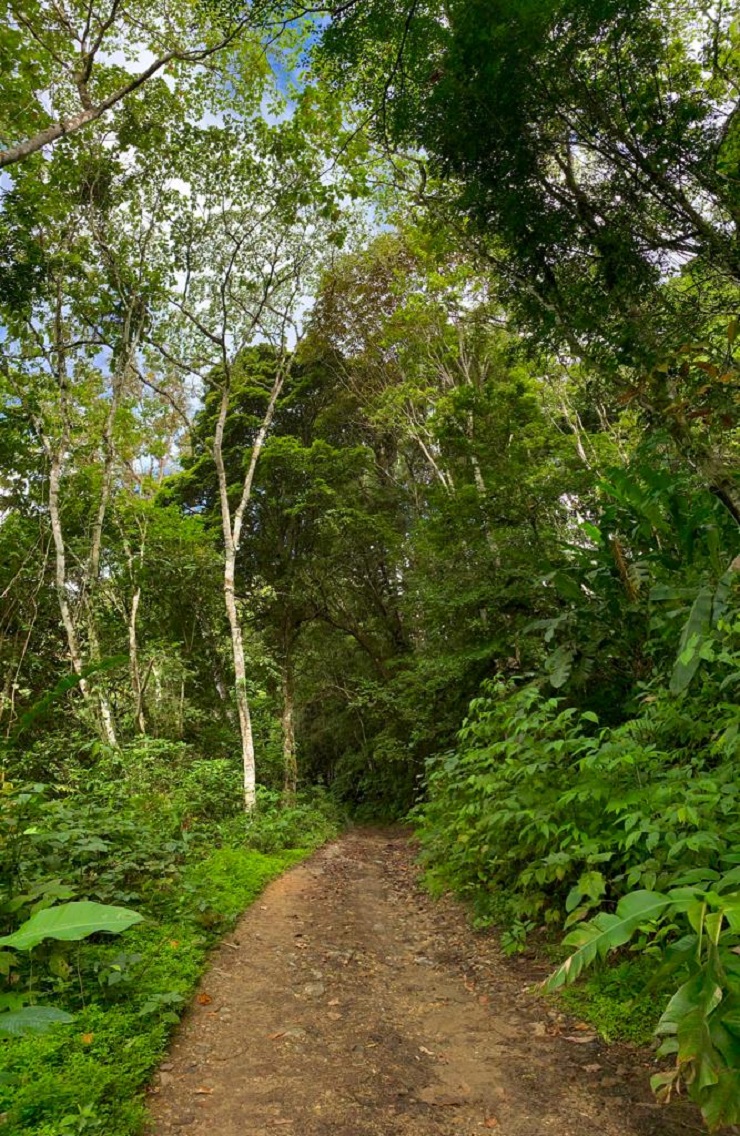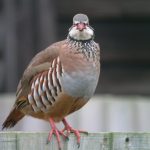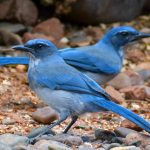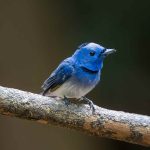
One of the most regularly traversed roads for the purpose of birding on the island of Trinidad is the Arima-Blanchisseuse Road. With the most extensive altitude profile of any roadway in the country, one can drive from sea level to a modest 600m through lush tropical rainforest the entire way. Most folks who have come here for birding have stayed at the Asa Wright Nature Centre (likely reopening later this year – but more on that to come) which is located along this picturesque road. Only a couple articles back I described the experience of a morning’s birding along this road.
A few days ago I veered off the Arima-Blanchisseuse Road onto a dirt road that’s been good to me over the years. Typically we have always stopped off at the first corner and walked around a few bends, searching the dense foliage for anything accommodating. On this particular morning we arrived in the dark, and the undergrowth was even darker. One of my bogey birds was the first sighting of the morning – a pair of Red-crowned Ant-Tanagers. This skulking species always manages to elude me. And on this morning sadly it was no different. After getting out of bed at the ungodly hour of 3am and driving for a couple of hours without breakfast or a full cup of coffee, I was not yet firing on all cylinders. I did manage a photo of the male with an unobstructed view of his namesake red crown, but my focus landed on a stick that was in front of the bird. I also missed a White-flanked Antwren that was hopping around with this pair.

I photographed this female Red-crowned Ant-Tanager before I even checked my camera settings.
A little annoyed at myself for squandering that opportunity, I sat with my coffee and breakfast and made a few test images using a few of the ever-cooperative Bananaquits on show. The Red-crowned Ant-Tanagers never returned, of course.

Look carefully and you’ll see two Bananaquits in this photo.
A main reason we stopped at this point was not only to have breakfast but also to monitor a tree that I had noticed sprouting flowers some weeks earlier. By this point, the flowers had given way to tiny berries that numerous birds were darting in for. Palm Tanagers, Bay-headed Tanagers, Violaceous Euphonias, and both White-bearded and Golden-headed Manakins were among the sights we enjoyed.

This Violaceous Euphonia felt confident in his ability to hide behind a twig.

White-bearded Manakin (above) and Golden-headed Manakin (below) in effectively the same spot merely seconds apart.


This tree was also where I had enjoyed previous sightings of Speckled Tanager – and eventually a pair of this beautiful species flew in.
After some time we decided to move on. Most times we would return to the Arima-Blanchisseuse Road but this time I opted to attempt to continue along the dirt road along the mountainside. From the map, this pathway was supposed to spit us out in an adjacent valley in the quaint (and historically significant) village of Lopinot. The road left much work to the driver, however, with many deep gorges and slippery mud-covered rocks. After navigating some of these treacherous passages we came upon a clearing with an unobstructed view of the valley. We decided to stop here for a bit as there was some audible avian activity underway.

The road (above), the view looking southwest (below).


There were many Silver-beaked Tanagers around, I observed this particular individual manipulating a wasp before swallowing it. Putting that heavyset bill to use!
While scanning the vegetation, I noticed a tiny flycatcher flitting about nearby. Slowly, I inched closer. Once I got close enough, I was absolutely delighted. This tiny bird with an almost non-existent tail was a White-throated Spadebill, a rarely seen resident of the forest understory in T&T. In fact, this was only my third time seeing this bird, once previously on Tobago and once on Trinidad – along this exact roadway.

White-throated Spadebill
A Green-backed Trogon was calling from a large tree but I was unable to find it until it flew off. Not even a minute later, we heard the similar vocalization of a Collared Trogon. Then another. And another.

This male Collared Trogon was very accommodating.

This female Collared Trogon flew in even closer and sat comfortably for a long while. These gorgeous birds hung around where we were for so long that eventually we grew tired and moved off.
The call of a Squirrel Cuckoo got me searching in the highest branches of some large trees nearby. It was easily located but it was not in the best of locations for a photograph. I knew that eventually this large bird would become restless and move on to another perch – and that it did. Frustratingly for me, it either paused in a very non-photogenic location, or didn’t face me at all. However, paying attention to the Squirrel Cuckoo made me aware of a couple tiny birds moving around in the canopy. Warblers.

Squirrel Cuckoo
We don’t get many warblers here so it was important that I at least made some effort to figure out what the creatures were. Resident Golden-crowned Warblers were a little lower down, in the canopy there were a couple American Redstarts. Smooth sailing. Then a flash of orange caught my eye. “Blackburnian!” I yelled. I had never seen this species before but that orange throat was like nothing else we get here. I tried my best to follow it as much as possible.

Blackburnian Warbler – only a handful of records in T&T in the last 25 years.
It was only when I got home and was going through my pictures I noticed another, plainer looking warbler. What were the odds? I remember going searching for migratory warblers many years ago and only getting poor views. This was considerably better, and thank goodness I was taking pictures so I would be able to inspect them properly from the comfort of my desk!

The second rarity of the morning, a Blackpoll Warbler.
Slowly moving further down the mountainside, we came upon an even more dicey section of road – or should I say “road” – so all attention was diverted to the slow crawl downhill on 1st gear. Thankfully, we made it out without incident and what’s more, had some incredible sightings to come away with!













Ooohhh… You really dropped a hint for some potentially good news (we all could certainly use some right now) about Asa Wright!
Though I am still slightly annoyed that I didn’t get to see the Golden-Headed Manakin when I was there in ’19 (because their favorite tree had just fallen down) or the Oilbirds (because they had decided to take a vacation.)
Agreed! Asa Wright was my first non-Mexico neotropical destination in the 1970’s. I’d love to hear more about what is underfoot.